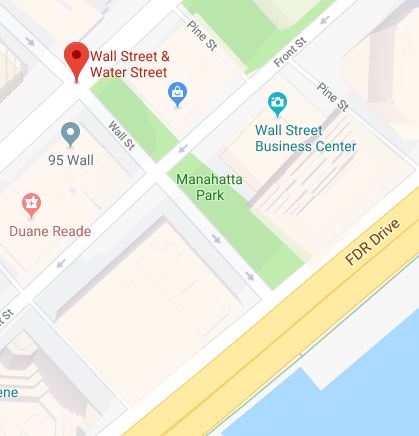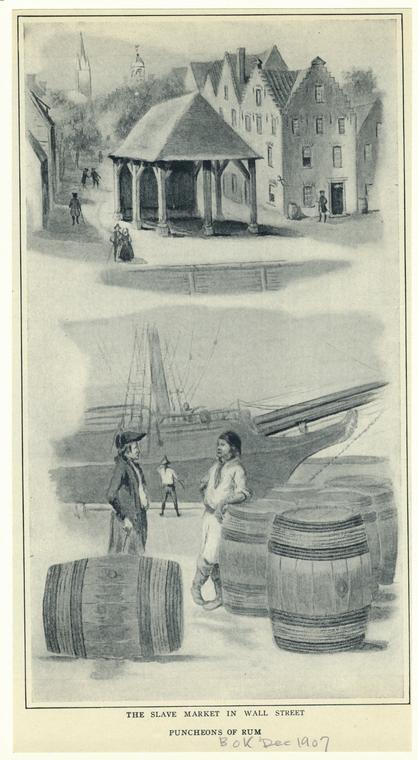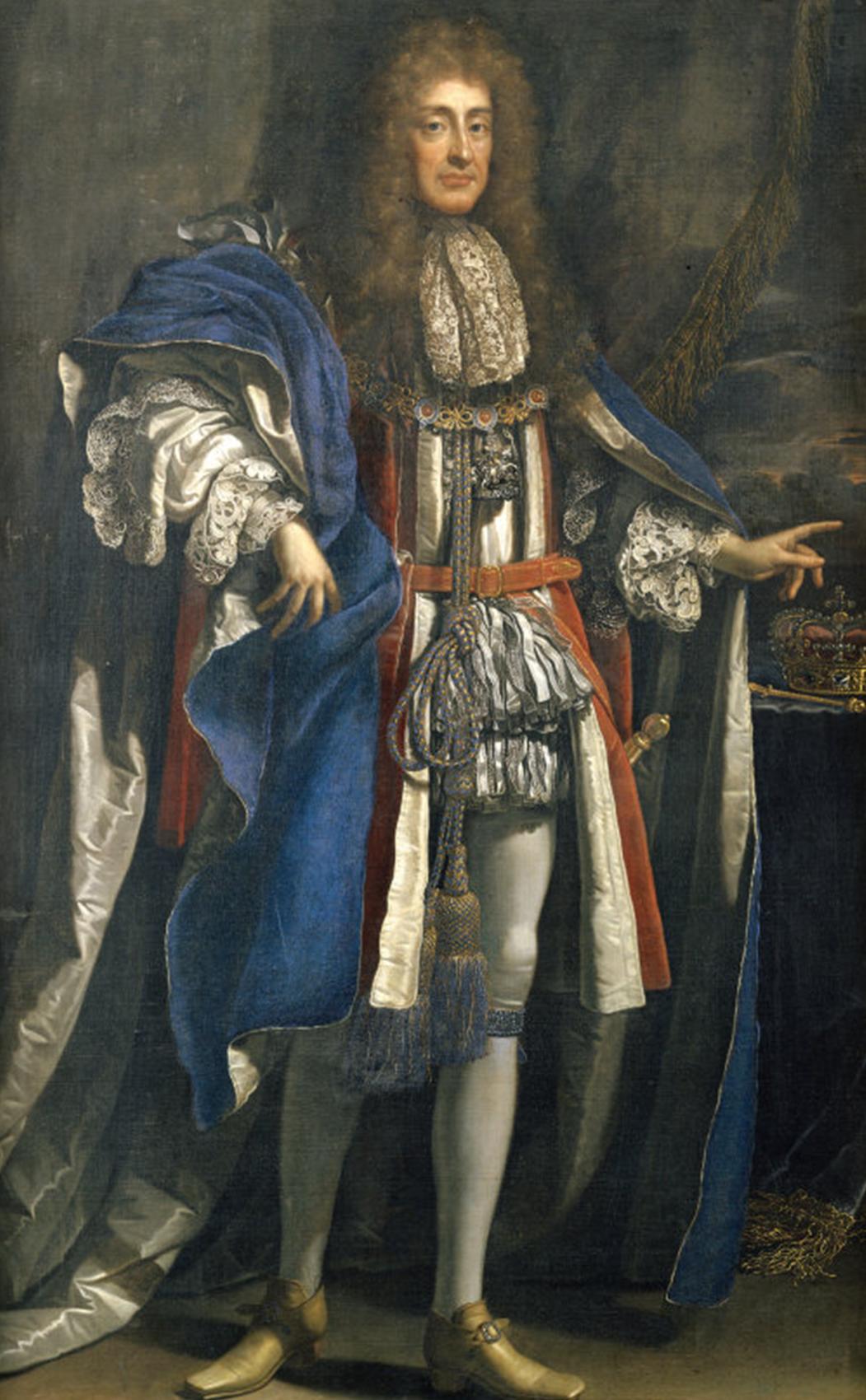Today, the Smithsonian Institute posted this article
titled, “Database Sheds New Light on NY’s Historic Ties to Slavery: A new index contains searchable records of slavery from birth registrations to runaway slave advertisements.”
Not long ago, I was doing research of my own. What I found is that there was a slave market on the east end of Wall Street, which at the time was along the East River. Modern NY had been expanded over the years, so the site would be a few blocks in from the East River.
Needless to say, I found Columbia Universities’ MAAP (Mapping the African American Past) website, which is absolutely amazing (great job, Columbia!). That website contains a lot of valuable historical information that helps professors and researchers (like me) find good, accurate(ish) historical context that isn’t spewed from Wikipedia or some outdated electronic encyclopedia or middle school website.
According to MAAP, New York was quickly growing into a city around 1711 (which is barely 50 years since the British acquired Manhattan Island and the rest of New Amsterdam from the Dutch, in war, because the Dutch wouldn’t just give that over without a fight. Right?) and the population of black residents was about 1000 out of 6400 (1:6.4?) and about 40% of the households had slaves.
So… why is this important? New York City was and is the largest coastal city of importance in American history. If you’ve never been there, just understand that there is no comparison between NYC and anywhere else. Sure, there’s LA (which is a city, region and county), Philadelphia (mmm, cheesesteaks), Chicago (deep dish pizza), and Boston (Faneuil Hall & Quincy Market, yo!), but nothing beats the heartbeat of NYC.

According to MAAP, the current location of the NYC slave market is at the intersection of Wall Street and Water Street…


The slave market was in close proximity to the ports where goods and products came and went. In addition, there were also skilled artisans (cooper-smiths (barrel makers), butchers, carpenters, blacksmiths and tin workers, for instance) who would buy young male slaves to train as “apprentices” (but they were permanently held in that position, even if their skills exceeded that of their masters). As was the case with urban slaves anywhere in the colonies, if the master did not have work for his slave(s), he could “rent” them out (hiring out) to others in order to make more money.
Rarely did slaves earn enough money to buy their freedom in that manner, but it infrequently did occur (you’d have to work an exceedingly long time to be able to earn enough to purchase your freedom in this manner as your master usually pocketed either all or most of the money the slave made for him by being hired out).
Anyway…
On 13 Dec 1711, the New York City Council passed a law that “all Negro and Indian slaves that are let out to hire… be hired at the Market house at the Wall Street slip…”, which was known as the “Meal Market” because grains were brought there by farmers and sold. This was located at the foot of Wall Street on the East River and the city’s original slave market. [*]


The British didn’t bring African slaves to New York City. In fact, the Dutch in 1626 began to systematically use Africans for labor– beginning with the first cargo that contained 11 Africans that were brought to the colony by the Dutch West India Co. Founded in 1621, the DWIC “operated both as a commercial company and as a military institution with quasi-statelike powers.” (E.B. O’Callaghan and Berthold Fernow, eds., Documents Relative to the Colonial History of the State of New York, 15 vols., 1856-87.) And, the larger plan to develop an agricultural colony with workers from Holland did not succeed. Instead, many Dutch settlers earned a lot of money by participating in the fur trade and then brought their wealth back to their families in Holland. The Dutch being here for a short time (overall) did not enable them to establish a permanent settlement. (I’ll get to this in a minute.)
The DWIC was dominant in the African slave trade from the 1630s to 1650s and in one year (1644) brought 6900 captives from Africa to its colonies in the West Indies to clear forests, lay roads, constructing buildings and houses as well as growing food. The group who is most responsible for laying the foundation of New Netherland (modern NY) was African slaves– building fortifications and making farming so lucrative that fur traders opted to switch to farming instead. Without condoning slavery, please understand that the mindset during this time is that the labor was essential for the Dutch to become successful in the mercantile markets of Europe and the Americas (and even to an extent Asia).
The price of an able-bodied male between 1636 and 1646 in New Netherland (parts of NY, NJ, DE, PA, CT) increased by 300% and by 1660, slaves from Angola arrived and were sold for 300 guilders (about $4,059.86 USD). So, those who bought slaves had the money to not only purchase, but clothe, feed and house them as well.


Africans who came here and either earned their freedom, were set free by their masters (manumission) or were free prior to arriving were permitted by New Netherland colonial council to serve in militias, own slaves, bear arms (weapons) and even helped defend the colony during the Indian wars of 1641-44. Racial division wasn’t like elsewhere– both white and blacks has equal standing in colonial courts and free blacks could own property (but Jews could not– as a comparison). Blacks and whites often intermarried and sometimes even owned white indentured servants.
Unlike the other European colonizers, the Dutch permitted African slaves to serve a particular amount of time and then would grant them “half-freedom“, which allowed them the ability to gain certain freedoms in exchange for doing compulsory work (fortifications, public works) in exchange for an annual tribute to the DWIC. Director General Peter Stuyvesant, along with others, adopted this system, which enabled them to be free of the cost of owning slaves full time (this way they could use them during certain seasons instead). And, frankly, a slave probably would prefer half-freedom than no freedom.
After the British took New Netherlands from the Dutch in 1664 (Anglo-Dutch Wars), the control was turned over to the Duke of York (hence “New York”), the future James II (Stuart Royal Family). He and his buddies held controlling interest in the Royal African Company, changed the name of the colony to New York, using the colony as a market for slaves.

I call this the era of 80s rocker hair… (and unlike the hair bands of the 80s, these monarchs and wealthy tut-tuts usually wore wigs)

Probably the most fascinating part of this fashion ensemble is the curtain rope with the tassels that fell to his knees and the ridiculous amount of cloth. Moving about must’ve been challenging, to say the least.
While the Duke of York, James established the laws for the governing of the Colony of New York, which, thank you to NYCOURTS.GOV, are accessible to you.
According to the Duke of York’s Laws (1665-75), pertaining to “bond slavery”, “No Christian shall be kept in Bondslavery, villenage or Captivity, Except Such who shall be Judged thereunto by Authority, or such as willingly have sould, or shall sell themselves, In which Case a Record of such Servitude shall be entered in the Court of Sessions held for that Jurisdiction where Such Matters shall Inhabit, provided that nothing in the Law Contained shall be to the prejudice of Master or Dame who shall by any Indenture or Covenant take Apprentices for Terme of Years, or other Servants for Term of years or Life.”
Essentially, it says that Christians could not be enslaved or held in captivity (relatively the same thing). This didn’t pertain to any Christians, it meant white Christians (as the colonial governments ensured that any African, after slavery becomes rooted in the colonies after Jamestown in the 1620s, were expected to become Christians, but were not granted freedoms upon conversion/baptism) only. In turn, it mentions indentures have a contract of “years or life”.
In the “Children and Servants” section, it states that if “any Children and Apprentices in some honest Lawfull Calling Labour or Employment… become rude or Stubborne or unruly to hearken to the voice of their Parents or Masters…” were to be given “ten Stripes” or whipped 10 times, as long as they were over the age of sixteen.
Furthermore (I’m still at the NYCOURTS.GOV page), where it states “Fugitives”, the laws are referring to apprentices and servants who leave without permission from their Master or Dame (mistress) shall forfeit £ 24 to the Master or Dame (mistress) and be fined £ 5 to the Court and perform labor for a particular amount of time (added to “sentence”).
The Smithsonian’s site, for as cool as it is that historical groups, committees, organizations, museums, etc., are giving us access to information that would help you to formulate a paper, do research for the sake of it, or write a blog like mine where the intent is to share the info with you, it’s a start.
But, don’t forget, don’t limit yourself to “wikis” and “encyclopedias”. When you think outside of the box, you can find things that you couldn’t imagine looking for, items that twenty years ago would have only been accessible via microfiche and microfilm (some of which are digitized by organizations, museums, universities and colleges, government offices, etc., to allow you better access to materials that were once limited).
Oh, in case you have NO IDEA what microfiche and microfilm are, here are pictures:

Microfiche machine– insert a strip of microfiche film, which had a micro (small) version of books for you to view on the screen. I used this machine when I was in grad school because not everything was digitized. Your generation has it so much easier. (Lucky!)

Microfilm
Other articles on the topic of African slavery in NY
- Harris, Leslie M., “African-Americans in New York City, 1626-1863”. [link]
- “African Burial Ground National Monument, New York.” National Park Service. [link]
- “History of Slavery in New York.” NY Historical Society. [link]
- “Slavery on Long Island.” Hofstra University Library, Special Collections Dept. [link]
- “Slavery in New York” Exhibition. NYHS. [link]
- “The NY Preservation Archive Project.” Preservation History Database & Oral Histories. [link]
- “Historical Context: Facts about the Slave Trade & Slavery.” History Now at The Gilder Lehrman Institute of American History. [link]
Filed under: GENERAL | Comments Off on NY Slave Databases RELEASED TODAY!

















